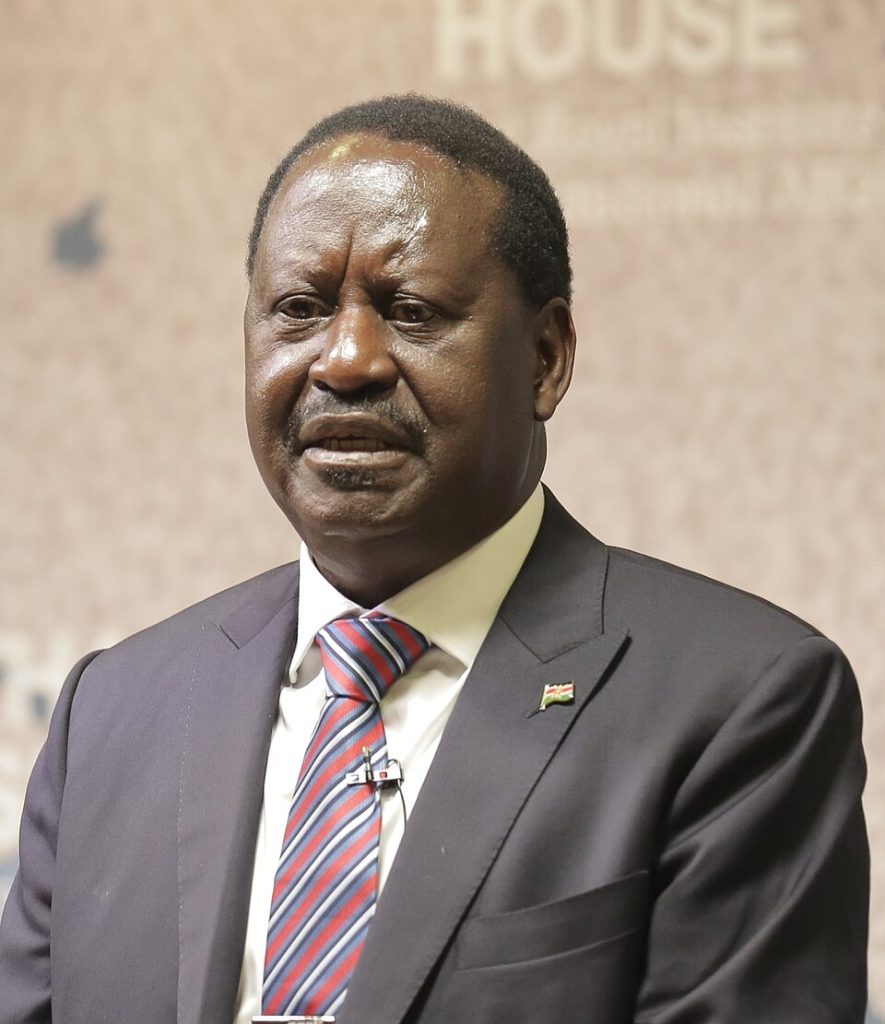By Eric Wamanji

It’s difficult to write about Raila Odinga after days of wall-to-wall press coverage, social media buzz and bar banter.
Still, society is intrigued as who the heir to the throne will be. Is there anyone? Well, not now.
How to become a Raila is neither a mere wish nor a birthright. To be the Raila we knew is to be forged in the furnace of life. It’s an epic journey of intrigues, dare-devilry, pain and sacrifices. It’s to be complex and self-contradictory – populist yet elite, radical yet pragmatic, rebel yet statesman. It’s to defy classification. Thus, unto us we got Agwambo -the mysterious one. And in that mystery, the charm lay.
Besides, to understand Raila the legend, Joseph Campbell’s the Heroes Journey, can help. Campell’s magisterial works provides the framework for appreciating how individuals become fabled. He postulates that heroes are shaped through trials, suffering, and transformative quests that elevate them beyond the ordinary. Campbell’s model involves a hero who: receives a call to adventure. Faces trials and enemies. Transforms. Returns to benefit the community.
Therefore, think of Raila’s flirtations with the botched 1982 coup. His detention and torture. His call again to fight for multiparty democracy. Election losses. Street protests. Agitation for a new constitution. Today, as articulated by previous writers, the democratic space- the elixir- to use Campbell’s word, is partly thanks to the impressive fight.
Indeed, confronting the Moi state required grit. To be fair, Raila was not alone in this quest. A battalion of charismatic, bold, luminaries from pulpit to parliament and media played a critical role. It’s the long arc of time and presence that gave Raila continuity in public imagination.
But then Raila was also a master dealmaker- almost a folkloric trickster. See, in 2001, he strategically joined Kanu -the then ruling party of his persecutor. The move confounded both foe and friend. But it was not long before he strategically dismantled Kanu in 2002 only to declare “Kibaki tosha”. Kibaki’s Narc won with a landslide. Kanu, hitherto a behemoth, was wrecked ad infinitum. What a political chess master!
Indeed, these manoeuvres allowed Raila accumulate what thinker Pierre Bourdieu called “social capital”. The social capital produced fanatical following which became Raila’s currency in politics. And boy, didn’t he know how and when to cash the currency?
This explains why he understood when to hit the streets and when to forgive and make peace. Out of this, he also became prolific in handshakes generating praise and reproach.
Raila’s mixed actions and endurances automatically produced narratives. In Moi’s Kenya, Raila’s name would rule headlines, whispered over dinner, chang’aa dens, marketplaces, and boardrooms. These narratives continued to be etched into the national consciousness.
Indeed, narratives are powerful. It is the political scientist, Benedict Anderson, who aptly observed that shared narratives create collective identities. Raila became part of Kenya’s national narrative, an “imagined community” of resistance and reform.
Legends, in Anderson’s view, are partly constructed through collective storytelling that elevates individuals to symbolic status- what the semiotician, Roland Barthes called “second-level signification” or a metaphor. However, Raila’s symbolism was also sharply contested by his critics. Still, to those who synced with him, the essence of “imagined communities”, remained robust.
To add another layer to his complexity, his detractors concocted myths like mganga, muchawi (witchdoctor, magician). Though designed as derogatory, the accusations elevated the man to the realm of extraordinary.
There is more about the man that made the myth. But truth is to be Raila, you need the weight of history with its attendant zeitgeist, the context, the expectation of a nation. You need resolve and conviction. It requires delayed gratification. It’s a labour of love.
In the political construct of today’s Kenya, those ingredients are scarce. Ours is a dispensation of politics that is profoundly transactional than conviction. Theatrical than ideological. Cowardice than courageous. It’s a politics of betrayal. Besides, the circumstances that subjected Raila to much pain, the giants he valiantly, especially Moi, are no more.
It doesn’t mean that the stakes for the survival of the democracy and republic are not as high. Nay. There is so much unfinished business in Kenya. Yet, going by what we see in parliament (a de facto house of auction) most have a price or are simply not invested in or inspired by a possibly great new Kenya.
In short, being Raila Odinga is not a walk in Uhuru Park. It’s a deeper, almost spiritual conviction towards a course -gallant battle for the soul of the nation. It requires the fire of history, the power of narratives, and a character that defies basic classification. Seeing things as they are, the next Raila will remain a mirage.
